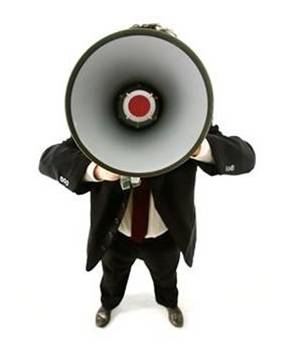Many people are remaining in the workforce longer than they used to, and all too often they are losing their hearing in the process. Sadder still is that the noise we subject ourselves to each day means we are often responsible for our own hearing loss.
Until the advent of artificial intelligence-based medical research, however, we did not know that noise has a direct effect on our bodies and our health independent of our ears, even if a person is deaf. Important research from the World Health Organization (WHO) has revealed environmental noise as one of the leading Social Determinants of Health (SDoH) in businesses and homes. Since a large part of our time is spent at work, today more than ever, businesses are a good place to look for ways to reduce noise.
Fortunately, there are a number of methods, many of which are inexpensive, for business owners to make their workplaces a little less noisy. This article will discuss five of them.
1) Suspend Sound Clouds
Sound clouds, also referred to as acoustic ceiling clouds and sound baffles, are an important component in combating workplace noise. Why? In many of today’s renovated workplaces, the ceiling is often left open with the deck exposed. That hard surface reflects sound and is the cause of both elevated noise levels and distortion. Sound clouds, often suspended vertically from ceilings to reduce noise, eliminate the need and costs of re-configuring HVAC, lighting and sprinklers.
Sound clouds, which come in a variety of materials, sizes, and shapes, help meet architectural design goals and even more important – they meet or exceed the acoustical performance of a suspended ceiling.
2) Install Soft Surfaces
There are two types of sound: airborne and structural. Airborne sound travels through the air — every sound the ear picks up is airborne sound. Structural sounds are vibrations carried through an object, like footsteps on a floor or a hammer banging on the wall.
Sound loves to bounce off and through hard, flat objects such as glass, hardwood floor and tile. Adding carpet, plush furniture, window trimmings and even plants can turn a hard, flat room into a softer, quieter area. Soft surfaces like carpeting, and vinyl flooring in particular, are ideal flooring solutions for noise reduction.
3) Lower Muzak Volume
Reports indicate that those ballads and other forms of easy listening music piped into your workplace may do more harm than good.
Even if you do in fact enjoy (or at least tolerate) the Muzak at your work, what volume is it played at? Artificial Intelligence (AI) analysis of SDoH found that the relative risk for death by heart attack or stroke increases 14% for every 10 decibel increase above the annual average of 45 decibels daytime. Since the volume in a typical business office averages 55 decibels, the moral of the story is easy to see: Turn down the Muzak!
4) Turn Off White Noise Machines
Like Muzak, white noise is supposedly soothing. White noise machines produce a noise that calms the listener, which in many cases sounds like a rushing waterfall or wind blowing through trees, and other serene or nature-like sounds. Sounds good, so what’s the problem?
According to Journal of American Medical Association (JAMA) research, white noise exposure may induce changes in the brain that degrade neurological health and compromise cognition. That’s not all. Additional JAMA research analyzed animal studies, which suggested that listening to white noise for long periods of time on a consistent basis can affect brain cells and cause tinnitus (ringing of the ears).
5) Consider Sound / Echo Analysis
Echo is the sound pressure reflected off a surface or series of surfaces, like a billiard ball bouncing off a rail. Resonance is echo amplified by the vibration of the reflecting surface. Therefore if the noise is 45 decibels, and the echo is 35 decibels, the total sound pressure is only slightly louder (around 47 decibels), BUT if there is a resonant echo (resonance) at 55 decibels, the total sound pressure will exceed 57 decibels.
While echoes may be desirable in some cases (as in sonar), they are undesirable when they are in a more closed-in area (such as certain phone systems in already noisy office settings).
Summary
Ears are fragile instruments. Damage results from both volume and length of exposure to sound. Very loud noises, or chronic exposure to sound even when it is not particularly loud, can wreak havoc on hair cells, causing them to degenerate. Once they are dead, they cannot be replaced, and auditory sensitivity is permanently lost.
Beyond the ears, we now know that noise pollution has both immediate and long-term health effects impacting the whole body. Noise pollution directly activates the body’s stress response, causing behavioral changes and high blood pressure now while increasing your risk of heart attack and stroke in the future.
Since we spend so much of our time at work, it stands to reason that we need to take reducing workplace noise more seriously. Doing so will bring more health and peace of mind to employees and customers alike.










